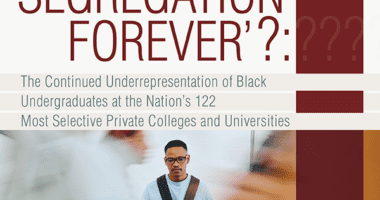Embedding a Hyper-Focus on Student Success Into Everyday Work
Institutional leaders have a responsibility to improve success for all students, especially those who are from underrepresented groups. While some leaders continue to abdicate their responsibility, many more are stepping up — and in so doing, grappling with tough questions about how to translate a commitment to student success into practice. What does it take to move from good intentions to hard work? What steps can colleges and universities take to be more intentional about making student success a part of their everyday culture? Lessons from institutions that are improving outcomes for all students can help show the way.
In conversations with leading colleges and universities, we found that they were most successful in improving student success when they collected, analyzed, and generated insight from data. Through those discussions, we identified three common themes that get to the true meaning of putting student success into practice.
Make things mandatory. As Kay McClenney, a higher education consultant and expert, often says, “Students don’t do optional.” And the students at Florida State University are no different. By monitoring student data, Florida State leaders saw that even when students were told utilize advising or to make use of student support services, they often did not. So they began requiring the services they knew students needed, which led to the development of academic maps that give students options but include mandatory checkpoints within those options. Each map has milestones, like reaching a certain grade point average or completing a specific course. Students who don’t meet their milestones within a major must meet with an adviser and have one semester to get back on track. After two consecutive semesters of being “off path,” they are required to select another major. While this may sound draconian to some, university leaders see the achievement of these intermediate milestones as critical for progression toward graduation. Rather than waiting for students to be unsuccessful for years — or to drop out completely — they proactively require students to either make progress toward the original degree or select an alternative degree in which they will find more success.
Provide structures that keep students on track. Too often, students arrive at college without a clear career decision or major course of study. And since many colleges and universities are structured in such a way that students can take any classes they want to take, this often results in wasted time (and money) in courses that won’t count toward what they ultimately choose as their major. That’s why, after analyzing progression data and graduation rates, Georgia State University created what it calls “meta-majors,” or broad buckets of work — like social sciences, natural sciences, health, or business. When students enroll, they choose a meta-major, and the university provides suggested courses to take that fall into that general field of study and fulfill general education requirements for majors in that area. The goal of the meta-majors is to give students an opportunity to explore different options for majors and careers, while also fulfilling basic credit requirements needed for a degree — thus allowing even undecided students to make a structured choice.
Meet students halfway. When officials at San Diego State University looked at retention and graduation rates, they saw that Latino students who lived off campus fared worse than Latino students who lived on campus. So they created Casa Azteca, a resource center in the San Ysidro area (south of San Diego) that provides many of the academic supports and social activities that commuter students may miss. Casa Azteca includes mentors, opportunities to interact with faculty and staff, and connections to on-campus social groups — all in a center located in their San Ysidro neighborhood, more than 20 miles from campus. Because students who feel connected to campus are more apt to stay and continue their academic careers, university leaders hope that Casa Azteca fills that void for commuter students, whose time on campus is short and fleeting.
For more examples of best practices from these universities and how data analysis led to these practices, we provide additional information in our forthcoming practice guide, titled Using Data to Improve Student Outcomes: Learning From Leading Colleges. Stay tuned for more!
Photo credit: Andrew Galang, San Diego State University









